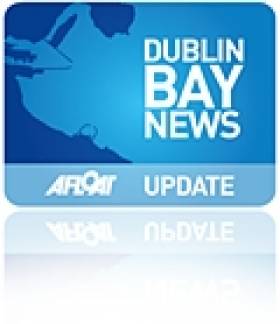Displaying items by tag: Soundings Exhibition
LexIcon Library: Soundings - Collective Memories of the Sea
#LexIconExhibition – Soundings: Collective Memories of the Sea is the inaugural exhibition programme currently held in the new Dun Laoghaire-Rathdown County Council Library headquarters – the dlr LexIcon.
Soundings which is exhibited in the Lexicon's Municipal Gallery, explores the relationships between Dún Laoghaire maritime environment of the sea and its people through artworks, talks and lectures.
Curated by Michael McLoughlin with thanks to Dún Laoghaire RNLI lifeboat crewmembers, Soundings brings together six artists with connections to Dún Laoghaire – the artists have investigated maritime histories, memories, testimonies and archives.
A range of free talks, workshops and performances take place as part of the exhibition.
Among the events is Sounds that Make the Harbour Visible: Wednesday 21 January: 1-2pm (Tea and Coffee provided)
A special screening of A Tribute to Sound, a short film by Simone Corr which commemorates the decommissioning of the foghorn from our coastline,will be followed by a talk. The bells, the foghorn and the maroons captured the imagination of the people of Dún Laoghaire and told a story of what was happening in the harbour.
Join Michael McLoughlin, Curator: Stephen Wynne,Dún Laoghaire RNLI; and Simon Coate, Dún Laoghaire Harbour Master as they discuss sounds of the harbour from the past and what happened as we moved into a more digital era.
RNLI Dun Laoghaire Exhibition
To explore and celebrate Dún Laoghaire's RNLI station, the crewmembers have created a video piece and a series of photographs, these can be viewed in the project room of dlr LexIcon.
For further information about the work of Dún Laoghaire RNLI please see their website: www.dunlaoghaire-lifeboat.ie
Booking: All workshops, talks and other events are free. Please book for all of the above unless otherwise stated as places are limited (to consult, please click HERE for Soundings exhibtion programme)
To book email [email protected] or phone (01) 271 9531 email [email protected]
The exhibition runs until Saturday 24 January 2015. For exhibition opening hours please go to: www.dlrcoco.ie/arts





























































